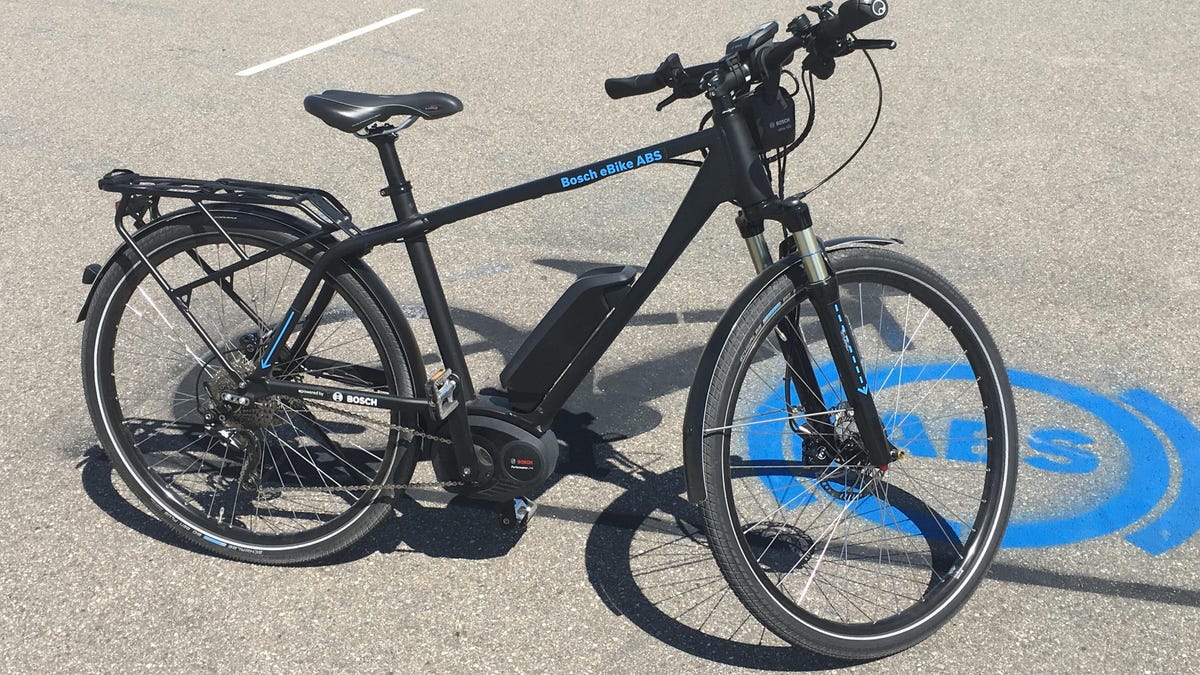Bosch brings anti-lock brakes to bicycles
We try out Bosch's new bicycle anti-lock brake system, and find it makes for quick, safe stops.

Bosch developed an anti-lock brake system for e-bikes, which leads to safe stops on a variety of surfaces.
Most bicycle riders experience the dreaded endo at some point. The front brake grabs too hard and suddenly your rear wheel head towards the sky, catapulting you towards a painful meeting with the road. Bosch's new anti-lock brake system (ABS) for bicycles makes the endo a thing of the past.
ABS, now standard on cars and available on some motorcycles, pulses the brakes, preventing tires from skidding to shorten stopping distances and keep the vehicle in control. Bosch's system for bikes works similarly, although it only needs to work on the front wheel.
During a tech day at the Bosch proving grounds in Boxberg, Germany, sponsored by Bosch, I straddled one of the ABS demonstration bikes and, following instructions, pedaled like mad before grabbing just the front brake as hard as I could. With little drama, the front wheel refused to skid, the rear wheel stayed on the ground, and I came to a surprisingly short stop.
Next up, I sped up and then jammed both brakes on slick cobblestones, grass and gravel. Each time, the ABS did its job, bringing me to a stop in relatively short distance.
As an experienced urban cyclist who has had an endo or two in the past, I was impressed with the stopping distance, which felt much shorter than with conventional brakes.
The ABS module sits under the handlebar gooseneck.
The system uses front and back disc brakes, each mounted with a sensor to determine wheel rotation, and a control module mounted under the handlebar neck. The software in that module ensures that the front brake doesn't lock up, allowing the wheel limited spin to prevent skidding. It can also determine if the rear wheel lifts by its relative rotation to the front wheel.
The biggest limitation of Bosch's ABS for bicycles is that it only works with e-bikes, due to the power requirements. The model I rode had eight gears, an electric assist motor, and battery pack, the latter two components also built by Bosch.
Although the demonstration bikes had fairly standard tires for urban use, a Bosch spokesman said that it works with any width tires, from 23mm on up.
The system will initially be deployed in shared bicycle fleets, then available on consumer e-bicycles in the near future.

